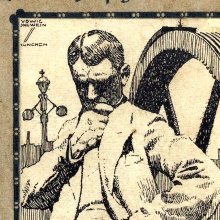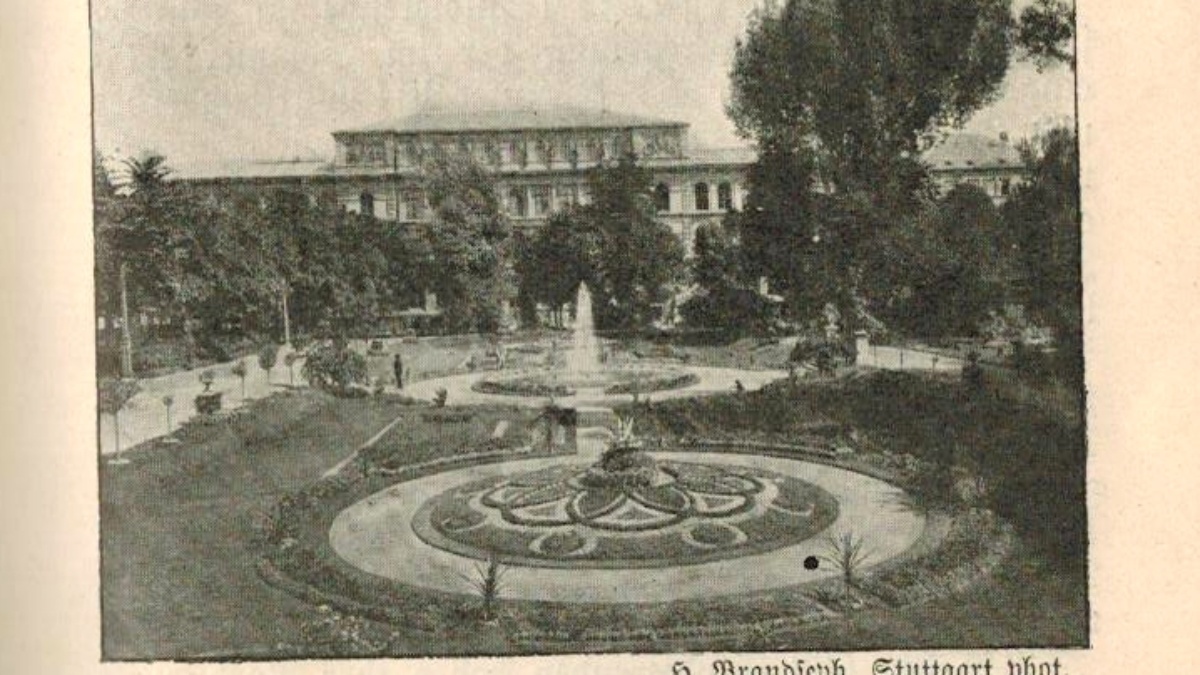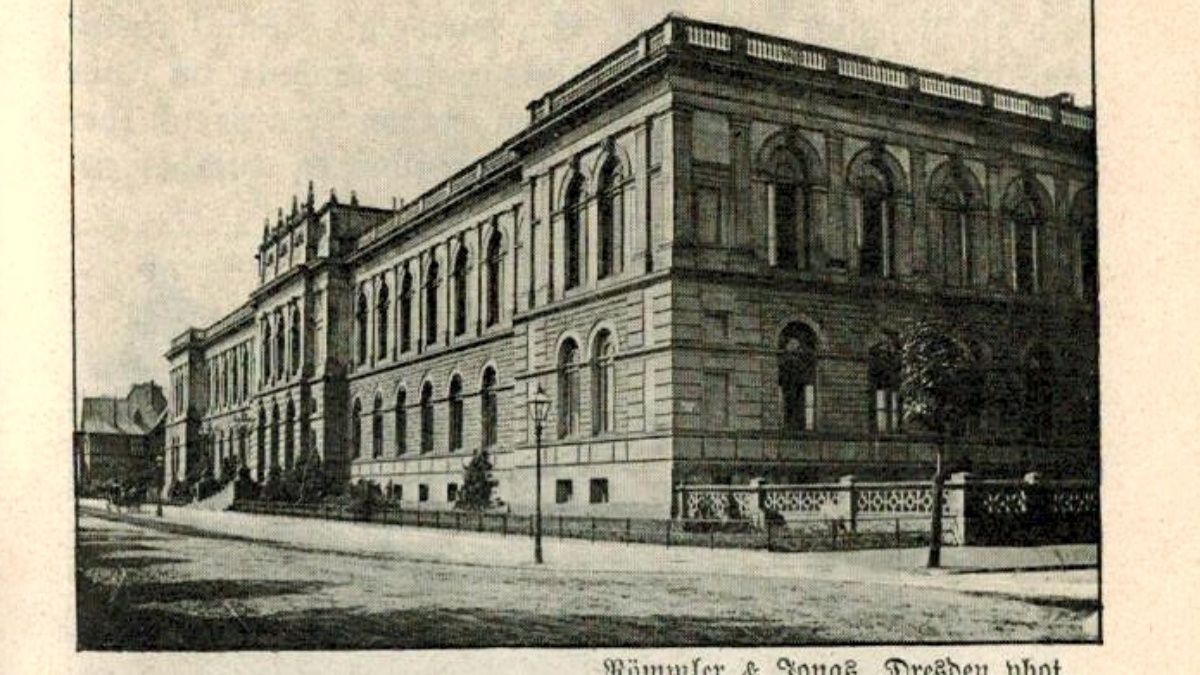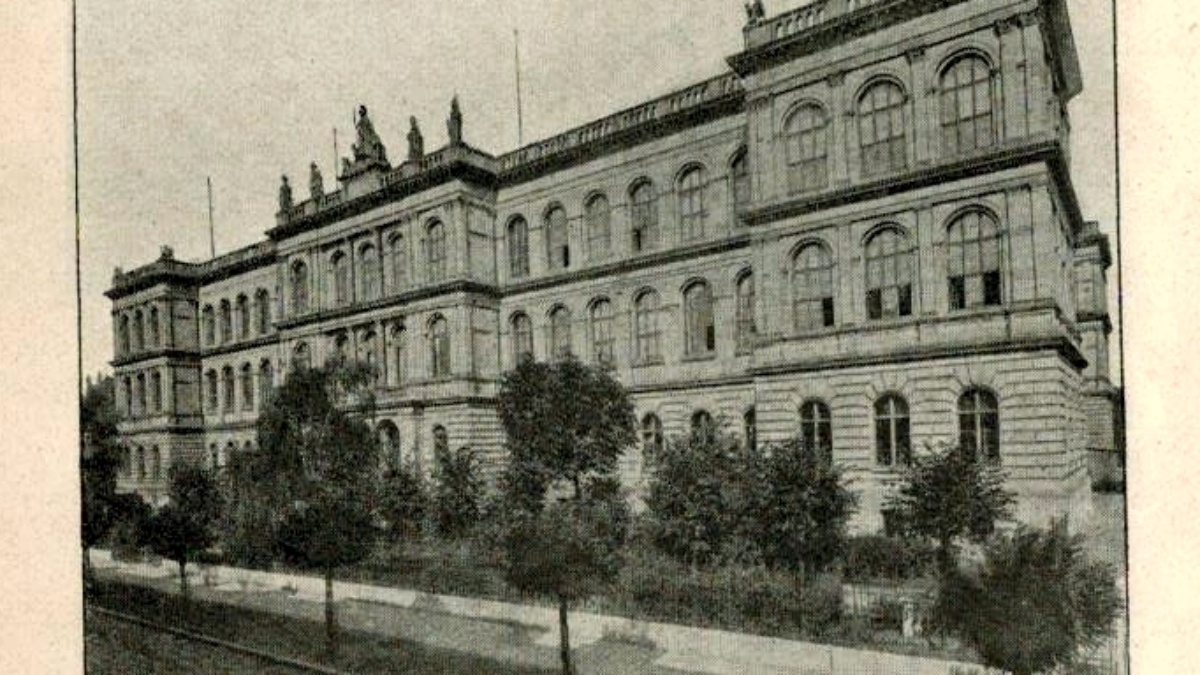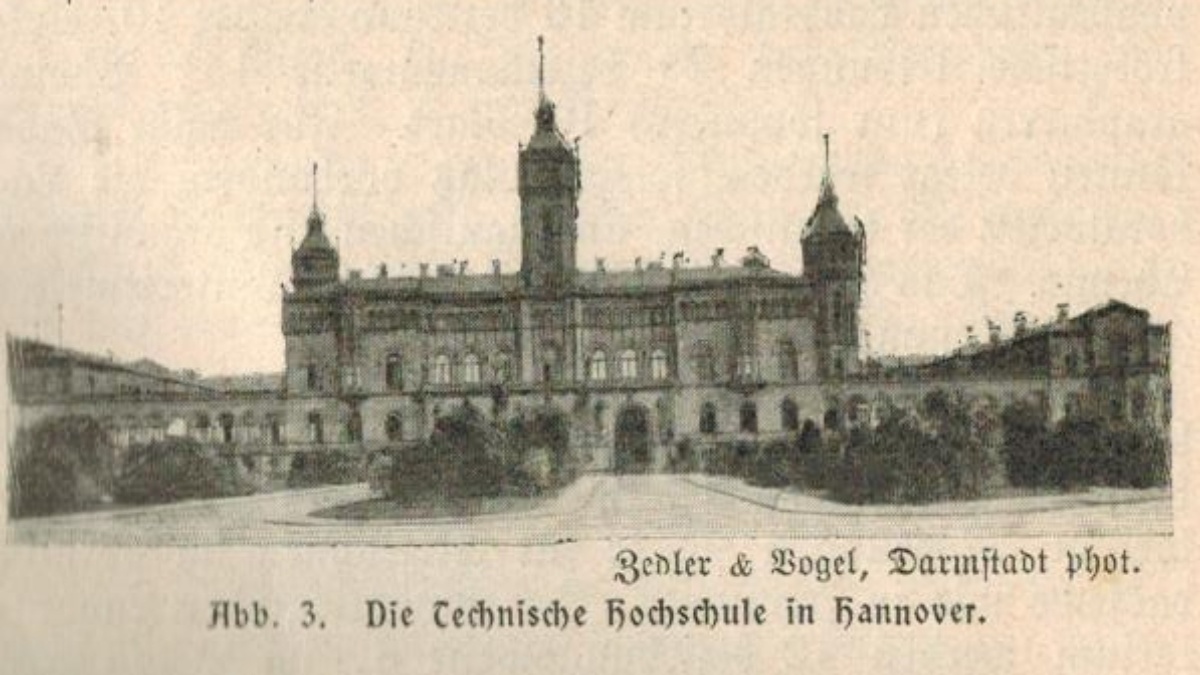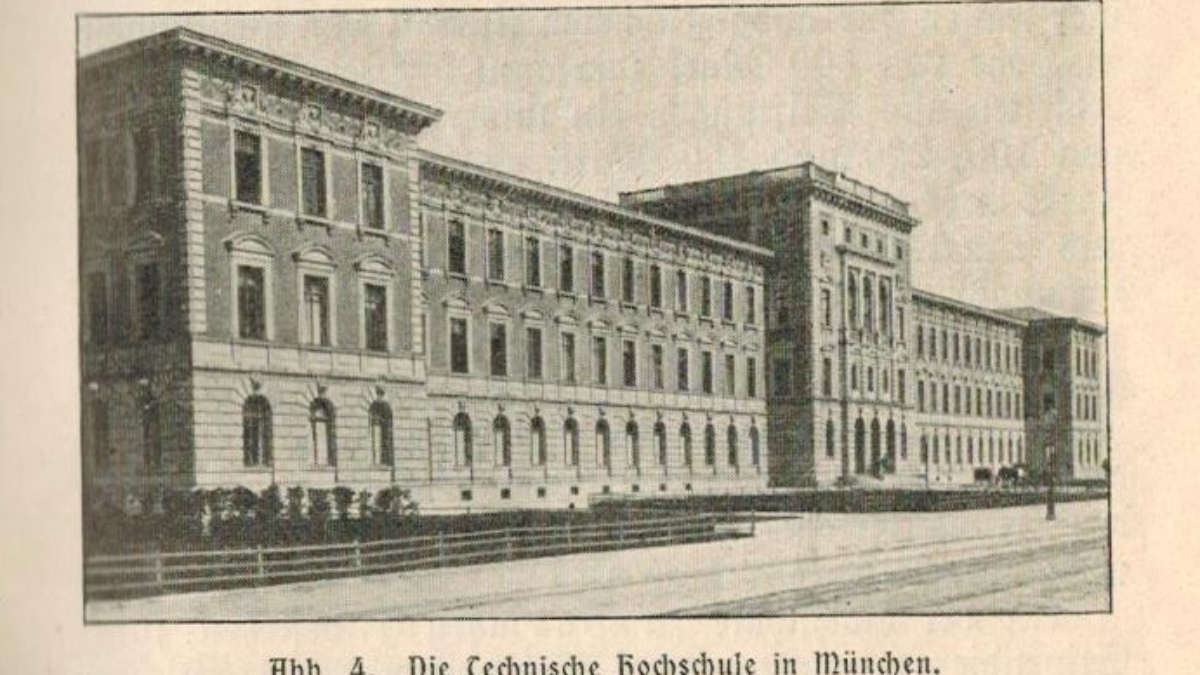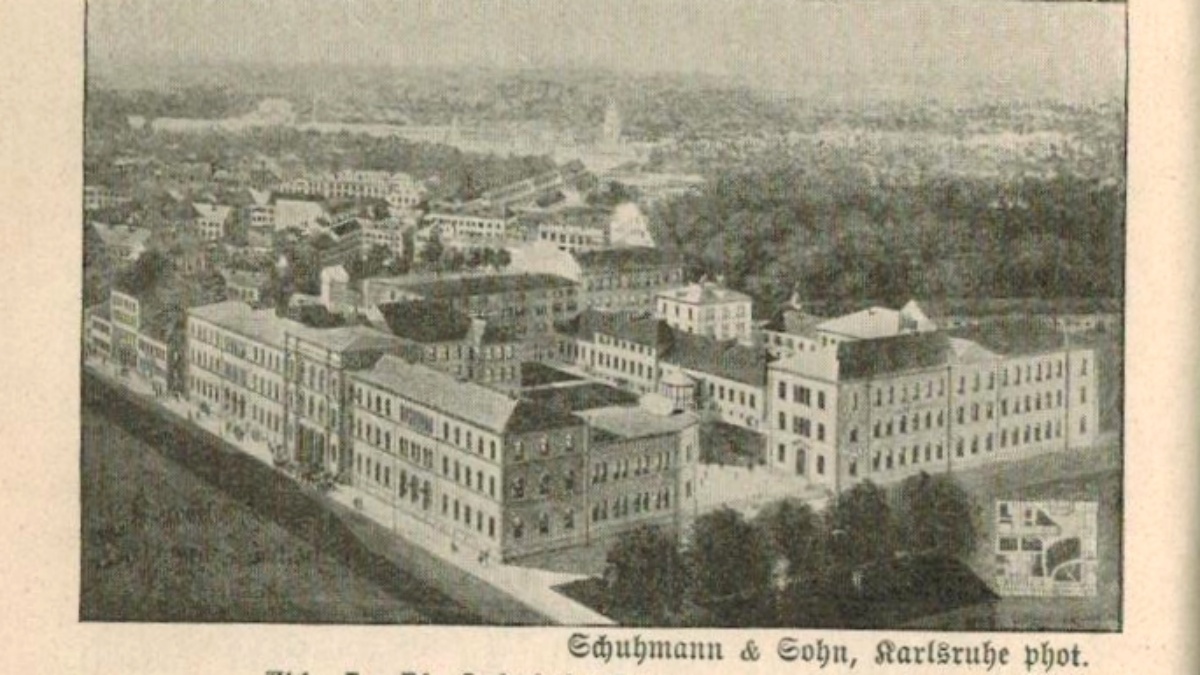Railroad, steamboat, and telegraph
A world without a smartphone in your pocket, without colorful lights over the streets, and without Webex meetings from the dining table: That was daily life around 1900. At the birthday party of the last King of Wuerttemberg, Wilhelm II, Professor Jakob Johann von Weyrauch (1845-1917) could nevertheless look back on technical achievements. The then-rector of the “Technische Hochschule zu Stuttgart” praised electric light, railroads and steamboats, telegraphs and telephones. In Stuttgart, he was giving lectures on engineering, construction, and mechanical theory of heat and did not want to leave the Swabian city despite several offers of appointment from other higher education institutions.
Choice of Profession: Technical Studies
Industrialization in the 19th century created the need for technical colleges (polytechnics) and led to the establishment of today’s University of Stuttgart in 1829. Science was to be put “systematically at the service of practical life”. This is written in a little book that can usually be found in the locked showcase in the rector’s office building, which is currently closed, at 7 Keplerstrasse. "Berufswahl: Das technische Studium" (Choice of Profession: Technical Studies) the title reads. The decorative etching on the cover – showing the budding genius – had been lovingly pasted by hand. The book was published in 1904 as part of the series “Illustrated Paperbacks for the Youth”. The small guide to studies of engineering and technology, which comprises 138 pages, was written by Heinrich Bauer.
Anyone leafing through it today will come across interesting facts and many a curiosity. The latter includes the fact that students were liable to disciplinary action by their university, such as “for recklessly incurring debt”. From today’s perspective, this also includes the astonishing observation that the book is written in a completely gender-neutral manner, i.e. the author consistently speaks of “persons studying” or “new entrants”.
First, however, the main intention of the Technische Hochschule should be mentioned: In the footsteps of Gotthold Ephraim Lessing, it is called “a new intellectual education of the human race”. It was also important to emphasize that the term “Hochschule” (literally meaning “high school”) has the word “school” in its name and should in no way be confused with a continuation of school. Rather, it was a matter of “guiding those attending the lectures to think and research independently” – just like today.
The Hochschule is not merely a continuation and completion of school, but a planting ground for free scholarship and advancing independent research.
Berufswahl: Das technische Studium, p. 128
From Aachen to Stuttgart – the TU9
It also gets exciting when “the current nine Technische Hochschulen of the German Reich” are presented. One can recognize the exact same TU9 of today, the members of the association of the nine leading German Technical Universities, which was established only in 2006 [de].
It is from humble beginnings that the present nine Technische Hochschulen of the German Reich - Aachen, Berlin, Braunschweig, Darmstadt, Dresden, Hanover, Karlsruhe, Munich, and Stuttgart - have developed.
Berufswahl: Das technische Studium, p. 8
The author made the effort to take a closer look at each of the nine higher education institutions. One could enroll in Architecture, Civil Engineering, or Mechanical Engineering at any of these institutions. In addition, some of them had discipline-related characteristics. While, in Berlin and Hanover, one could also enroll in Shipbuilding and Marine Engineering, the Hochschule in Munich focused more on agriculture and the one in Karlsruhe on forestry. A unique characteristic of the Hochschule in Stuttgart were studies to qualify for the “senior Service for the Railroad, Post Office, and Telegraph Office”. The humanities in Stuttgart were hidden behind the term “subjects of general education”. One could obtain a diploma in German Studies, Geography, or Art History and, additionally, qualify to become a teacher.
Also, the strong international networking of the University of Stuttgart today was already visible at that time. Unlike in Munich, students from abroad did not have to pay higher tuition fees in Stuttgart. As a result, a third of the students in Stuttgart came from outside of Wuerttemberg. People eager for knowledge flocked to Stuttgart even from America and Japan.
The non-Wuerttemberg students come from other parts of the German Reich, from almost every other European country, from North and South America, and from Japan.
Berufswahl: Das technische Studium, p. 32
Even a rich nation does not have an abundance of talent
The little guidebook even goes into detail about the necessary character requirements if someone intends to pursue a technical course of study. According to Mr. Bauer, “only eminently capable people” are suited for technical studies. Prospective students need to have “the willingness to work hard”, “character”, and “will power”.
Since studying around the year 1900 was a costly affair – “about 300 Marks” per academic year plus living expenses – it also required a willingness “to devote oneself to technical studies in defiance of poverty and destitution”. For comparison: People had to pay 10 Marks for a pair of proper Sunday shoes and for 100 marks, a working-class family of four could stock up on food to get through the winter.
“In Stuttgart, each student has to pay a tuition fee of at least 60 Marks, in which the fee for private lectures is not included. The fee for such lectures is set by the lecturers. In addition, compensation money must be paid for the use of devices, equipment, and materials. The admission fee for new entrants is 10 Marks. Guest students have to pay the following fees: 6 Marks per semester for a one-hour lecture, 11 Marks per semester for a two-hour lecture, 15 Marks per semester for a three-hour lecture, and 19 Marks per semester for a four-hour lecture. If the lecture comprises more than 4 hours, each additional hour will be charged with 3 Marks. For exercises, guest students pay double the existing fees for regular students. The participants of exercises and excursions are insured against accidents, for the time being from the funds of the Hochschule. In the academic year 1899/1900, 122 out of 745 students from Wuerttemberg were exempt from tuition fees.”
(Berufswahl: Das technische Studium, p. 17)
Around 1900, a social aspect had to be present. Scholarships – such as the “Christmas Scholarship” of the Stuttgart Freemasons – were mentioned and emphasis was placed on the fact that even the richest nation could not afford to waste talent.
Mr. Bauer didn’t want to leave the choice of profession entirely up to talent though. One does indeed need to think about “prospects for later advancement,” he said. However, since people with technical professions were in high demand by the state, the local government, and industry alike, according to Mr. Bauer, technical studies were an exceptionally promising career choice. The career choice guide, therefore, highly recommended studying at the Technische Hochschule – without wanting to give any guarantees.
The cultivation of sociability
Finally, a look is taken at student club life. Even though the Technische Hochschulen had, unfortunately, followed the example of the established universities when it came to the hustle and bustle, in principle the “cultivation of cheerfulness and sociability” was to be welcomed. Besides, “sociability” could ultimately be “put to the service of scientific purposes,” Mr. Bauer wrote. One may well read this with a wink.


